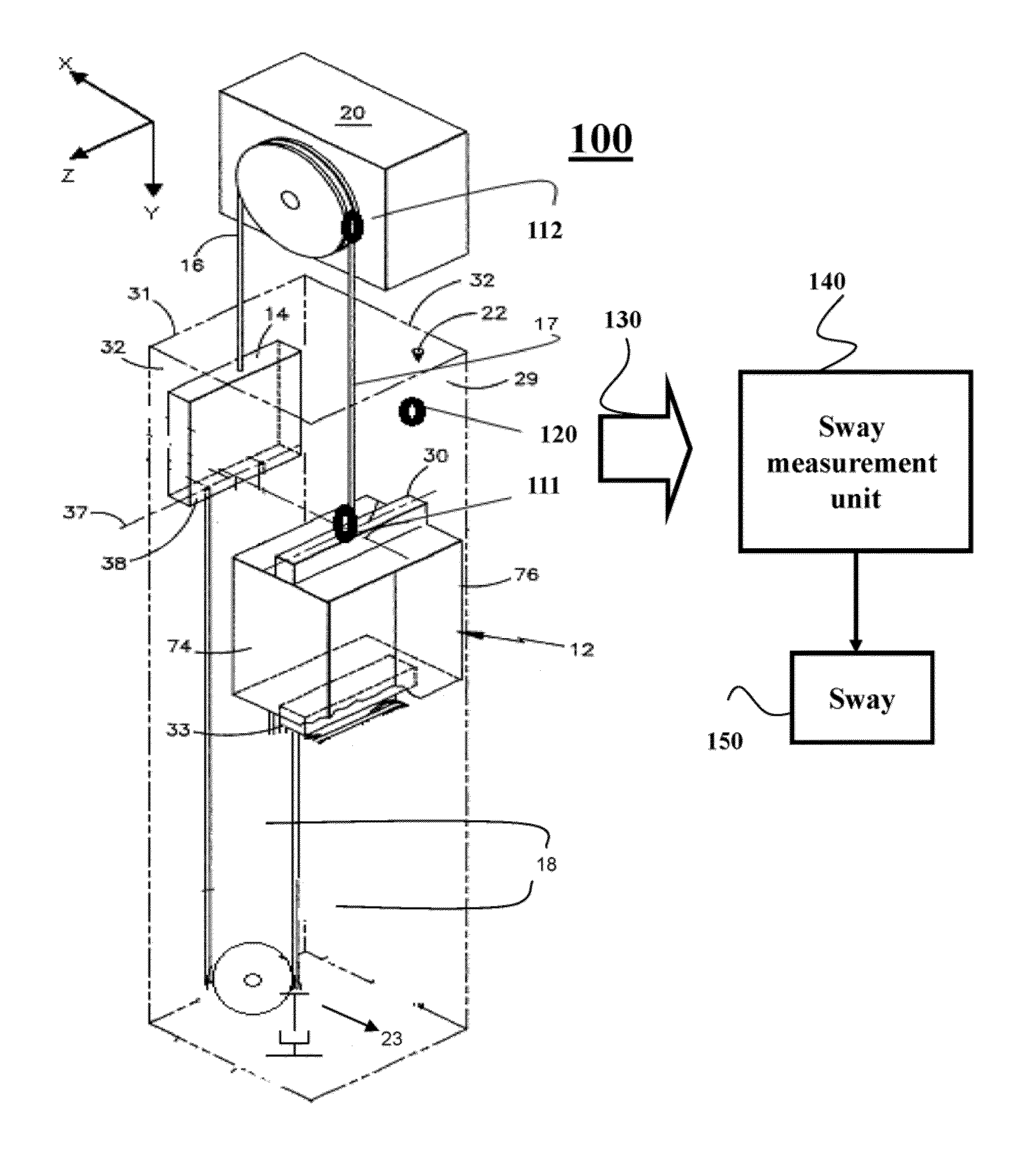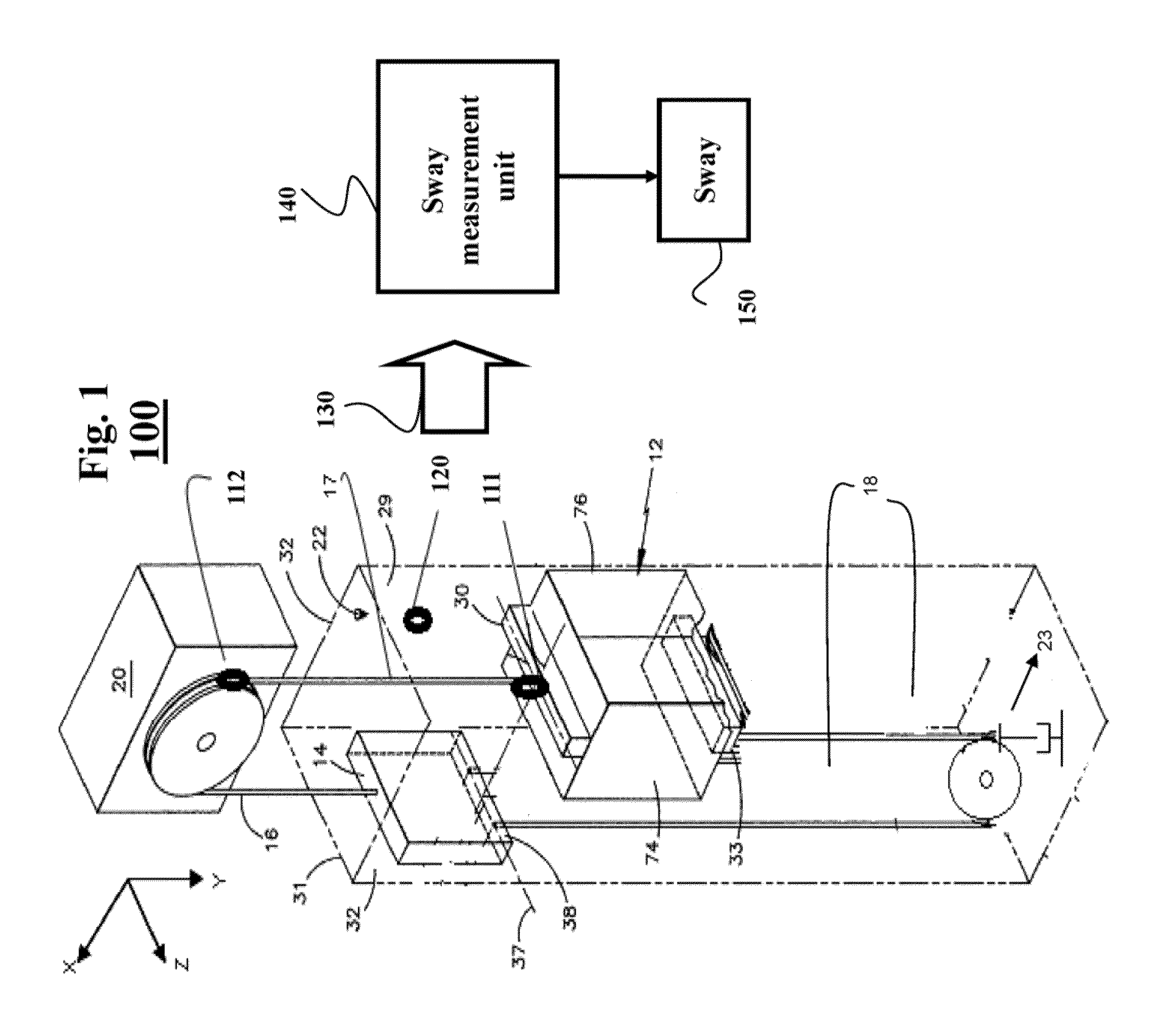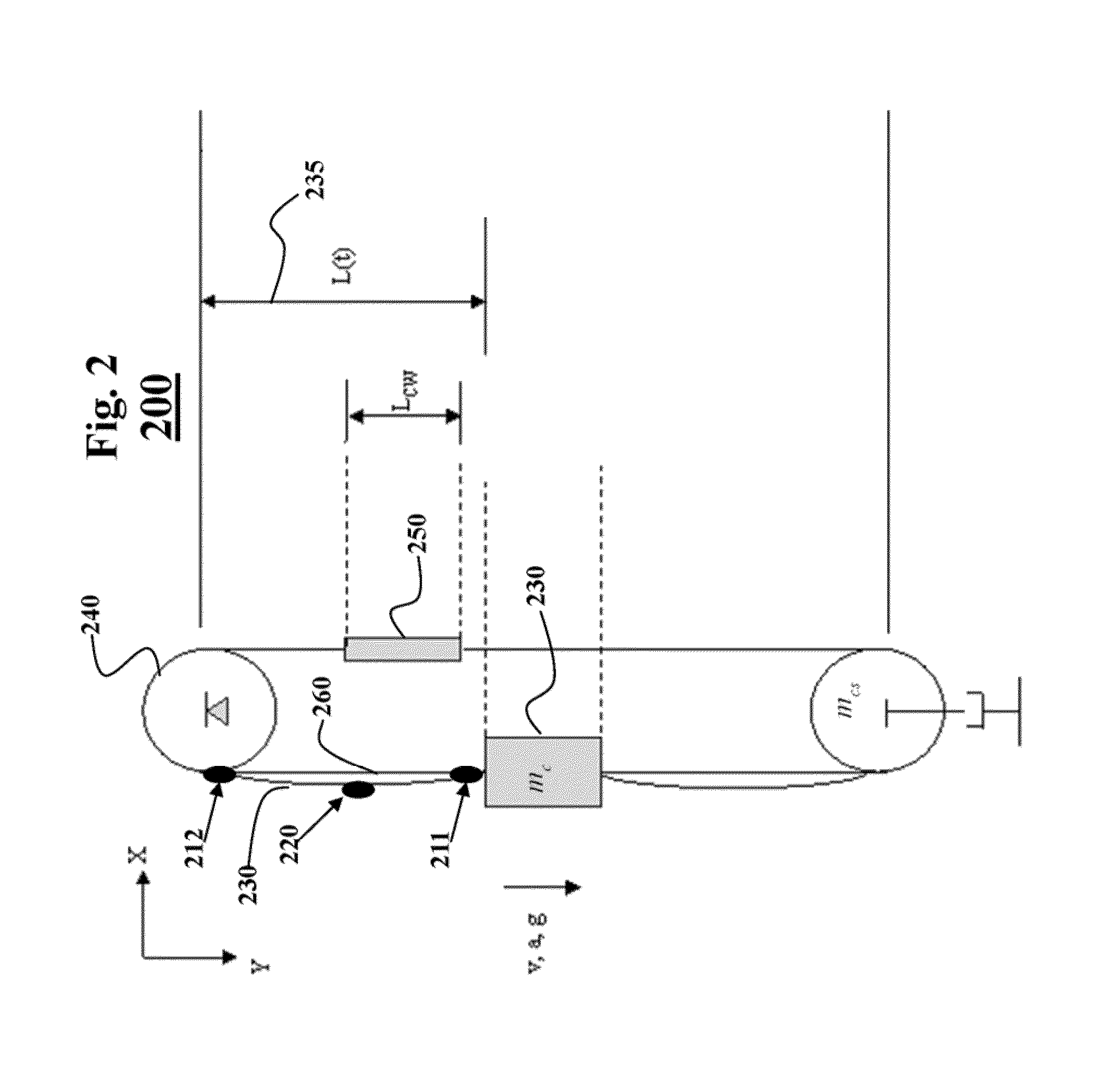Elevator rope sway estimation
a technology of elevator rope and sway, which is applied in the direction of elevators, instruments, transportation and packaging, etc., can solve the problems of affecting the operation of the elevator system, so as to achieve the effect of minimizing the cost function
- Summary
- Abstract
- Description
- Claims
- Application Information
AI Technical Summary
Benefits of technology
Problems solved by technology
Method used
Image
Examples
Embodiment Construction
[0039]FIG. 1 shows an example elevator system 100 according to one embodiment of an invention. The elevator system includes an elevator car 12 connected by at least one elevator rope to different components of the elevator system. For example, the elevator car and a counterweight 14 attached to one another by main ropes 16-17, and compensating ropes 18. The elevator car 12 can include a crosshead 30 and a safety plank 33, as known in the art. A pulley 20 for moving the elevator car 12 and the counterweight 14 through an elevator shaft 22 can be located in a machine room (not shown) at the top (or bottom) of the elevator shaft 22. The elevator system can also include a compensating pulley 23. An elevator shaft 22 includes a front wall 29, a back wall 31, and a pair of side walls 32.
[0040]The elevator car and the counterweight can have a center of gravity which is defined as a point at which the summations of the moments in the x, y, and z directions about that point equal zero. In ot...
PUM
 Login to View More
Login to View More Abstract
Description
Claims
Application Information
 Login to View More
Login to View More - R&D
- Intellectual Property
- Life Sciences
- Materials
- Tech Scout
- Unparalleled Data Quality
- Higher Quality Content
- 60% Fewer Hallucinations
Browse by: Latest US Patents, China's latest patents, Technical Efficacy Thesaurus, Application Domain, Technology Topic, Popular Technical Reports.
© 2025 PatSnap. All rights reserved.Legal|Privacy policy|Modern Slavery Act Transparency Statement|Sitemap|About US| Contact US: help@patsnap.com



